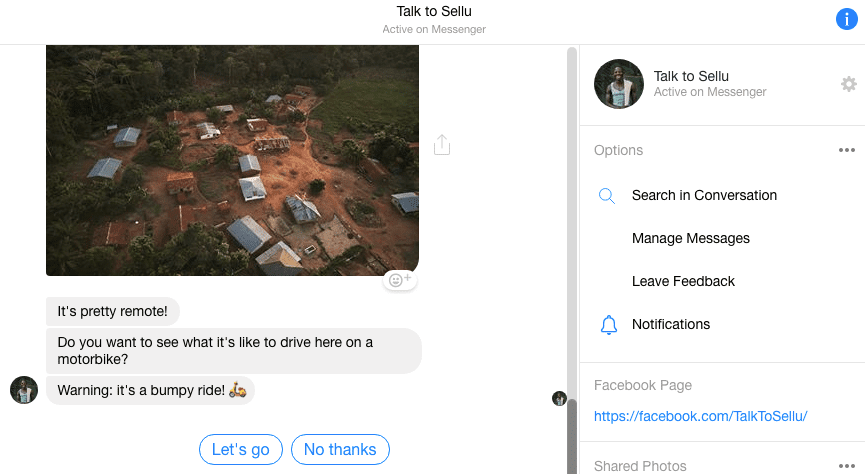AI & machine learning in CRM systems – opportunities & benefits for charities
While we tend to think first of robots and self-driving cars when we think of AI, in fact, along with its subset machine learning, it’s already firmly established in our lives – making many everyday tasks easier and experiences smarter without us even really noticing. But how is it helping charities?
In our consumer lives, Siri, for example, uses voice processing to enable it to act as a virtual PA, and lots of retailers now use machine-learning algorithms to provide recommended products. It even plays a key role in filtering out the spam in our inboxes.
The charity sector is also starting to use these technologies more, and one area they’re proving of benefit is in CRM systems and the tech they link to.
Chatbots & digital assistants
For a start, Keith Collins, Senior Consultant at Adapta Consulting says:
“Used with chatbots, telephony, and direct messaging, AI can, without human intervention, start to understand clients’ needs at a very early stage based on key words, and enable particular resources to be presented through the web, and to identify if there is a need to involve a human. This happens in the commercial world all the time, and there are a lot of potential applications here for charities too.”
Advertisement
Last summer for example, Versus Arthritis introduced its COVA chatbot to help give people with arthritis and musculoskeletal conditions easy access to relevant information relating to Covid-19. And, in collaboration with the British Society for Rheumatology (BSR), it also launched BSR-COVA: a similar chatbot for healthcare professionals.

WaterAid Sellu chatbot in action
WaterAid has also used a chatbot to engage and fundraise, introducing people to Sellu, a farmer and fisherman from a remote village in Sierra Leone as part of its Untapped appeal. Through a mixture of messages, photos and video content, Sellu introduced users to his home and family. The chatbot also provided updates on water and sanitation infrastructures being built with help from WaterAid supporters, with users ultimately asked if they would like to donate to the appeal.
Elsewhere, in 2018 the British Heart Foundation became the first UK charity to launch an Alexa skill. This enables supporters to make a one-off donation through Amazon Pay or to organise a collection of unwanted furniture and electrical items through voice commands. At the time, the charity’s Chief Executive Simon Gillespie said:
“More people than ever own a digital assistant like Amazon Echo and it’s really exciting for our supporters to be able to use their device to support life saving heart research. We’re constantly adapting as an organisation to be where our supporters are and to give people choice to make donating as easy as possible.”
And last year, voice technology company, Say It Now teamed up with digital advertising exchange DAX to enable people to respond to radio ads on their Alexa-enabled smart speaker and use voice commands to find out more about a charity to donate directly to it, with NSPCC, RNIB, Crisis, Macmillan Cancer Support and Global’s Make Some Noise among those set to use it.
Predictive modelling benefits
AI can also be used in CRM systems to help charities build predictive models, working out which donors might have a greater propensity to become regular or major donors for example, and who therefore to contact with which messages.

Salesforce says it has built AI into all its applications to help charities make interactions smarter, through Salesforce Einstein. It believes that the potential benefit from using machine learning and AI may be even greater for individual non-profits than for commercial businesses.
“As non-profits are often strapped for resources and time, targeting the right individuals is critical. Even with adequate research, it can be hard to understand which individuals will have a strong enough affinity to an organisation to make a major gift.
“Imagine a combination of data on your donors’ giving history with a wealth engine tool that could provide predictive insights, built in to your organisation’s CRM where you can run the analysis with a click of a button.”
“Machine learning can be used to analyse patterns and predict the actions that individuals will take, such as open, click through, or unsubscribe when sent an email. The results can then be used to build smarter segments and journeys. A constituent unlikely to open an email can be sent a text, as an example, if this would result in a higher likelihood of engagement.”
Barriers to uptake
Certainly there’s a lot of potential for charities to benefit from AI and machine learning, so what’s stopping more from using them? Often, it boils down to technology and data issues.
Adapta Consulting’s Collins says:
“A lot of non-profit organisations have tech challenges to work out. Mid-sized organisations can have the biggest ones. They don’t have the economies of scale of larger organisations or their lightness of foot, which is shared by smaller organisations who have smaller teams, no legacy system to deal with, and are often making their first foray into tools so there’s less inertia. Although these of course don’t always have the experience and knowledge to go and get the right tech mix.”
But, he adds:
“Leveraging AI tools also only works as well as the underlying data they have access to, and lots of organisations have data in disparate places.”
David Simpson, CTO at Beacon CRM, agrees data is key – and not only having it one place, but having enough of it.
“From a CRM point of view, charities need to bring all of their data together – from volunteer, to beneficiary, and fundraising data – and then we can do interesting things.”
“We can use it to build predictive models about whether an organisation will win a grant, or the lifetime value of a donor based on their past supporter behaviour, for example. We know how to do that and the technology is there, but the only way we can build these models is if we have all that data.”
He notes that many smaller organisations don’t necessarily have it in volume, something perhaps that greater collaboration within the sector could help with in terms of the sharing of anonymised data.
Either way, bringing your data together is the key to organisations of any size being able to take up the opportunities available now – both in terms of CRM, and AI – as well as those to come in the future. Simpson’s advice is this:
“Get your data ducks in a row. Prepare – get your data sorted within your organisation, make sure your CRM is flexible and that data flows into it, and if you’re doing those things, you will see a benefit.”
More help with CRM for charities:
Beginner’s Guide to CRM for Charities 6 January 2020
How to convince your boss to invest in a CRM 6 January 2020
Oxfam’s Nicola Tallett on Salesforce’s Nonprofit Cloud 7 January 2020
Main image by Ash Edmonds on Unsplash
![]()




